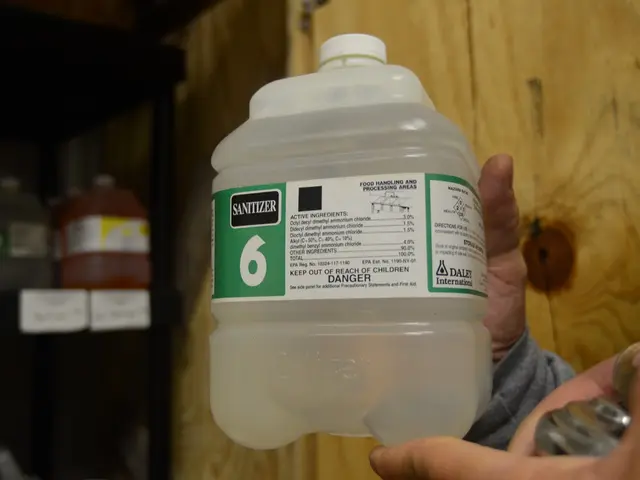Distinguishing Age Spots from Skin Cancer: Identifying Signs and Differences
Age spots, sometimes known casually as sunspots or solar lentigines, are harmless marks that grow on your skin as you age. These butter-colored spots can, at times, resemble types of skin cancer or precancerous growths, but don't fret – age spots aren't dangerous.
Just like age spots, skin cancer often forms on areas of the body that get a lot of sun exposure, such as your face, hands, shoulders, and arms. Identifying the differences between these two can help you discern when you need to talk to a healthcare professional. Key differences include texture, color, and placement.
Age spots vs. Skin cancer: what's the scoop?
Age spots are small, flat, and oval or round in shape. Their colors typically range from light brown to dark brown or black, and they're generally uniform in tone and shape. They often emerge on areas with heavy sun exposure.
Skin cancer appears differently depending on the type, such as:
- Basal cell carcinoma: resembles a pearly, translucent bump, which might be red or pink and have raised edges and a depressed center. It can bleed or ooze.
- Squamous cell carcinoma: forms as a scaly patch, raised lump with a depressed center, and a wart-like growth. It might open up and resemble a sore that won't heal.
- Melanoma: is an irregular, asymmetrical, multi-colored mole or spot (including brown, black, red, and blue).
Skin cancer lesions may cause discomfort, such as itching, bleeding, crusting, or oozing. Age spots, however, do not cause physical discomfort and are mainly a cosmetic concern.
Watch for these warning signs
To help distinguish age spots from skin cancer, be on the lookout for the following symptoms:
Age spots:
- Painless, non-itchy, and do not bleed
- No physical discomfort; mainly a cosmetic concern
Skin Cancer:
- May itch, bleed, crust, or ooze
- Lesion may grow or change in size, shape, or color
- Open sores that don't heal
When to reach out to the doc
Consult a healthcare professional if you notice any unusual changes to your skin, especially new or changing marks. Early detection of skin cancer can make treatment more manageable and improve health outcomes. Contact your doctor if a spot:
- Changes in color, shape, size, or location
- Looks different from other spots on your skin
- Itches, crusts over, or bleeds and doesn't heal within 4 weeks
Diagnosis and treatment
Healthcare providers can typically diagnose age spots based on their typical appearance and sun-exposure history without performing a biopsy. In contrast, skin cancer requires a biopsy to confirm the diagnosis.
Early detection is crucial for successful treatment of skin cancer. If cancerous tissue is discovered, various treatments are available, including surgical excision, Mohs surgery, radiation, chemotherapy, or immunotherapy. Age spots can be treated through topical creams, chemical peels, cryotherapy, or laser therapy. Prevention is key – always apply sunscreen, wear protective clothing, and limit sun exposure.
- In the field of dermatology, melanoma is a type of skin cancer that appears as an irregular, asymmetrical, multi-colored mole or spot, which can include brown, black, red, and blue hues.
- Seniors might want to be aware of other skin cancers, such as basal cell carcinoma and squamous cell carcinoma, which can manifest as pearly or scaly growths, respectively, often caused by long-term sun exposure similar to age spots.
- Health-and-wellness professionals emphasize the importance of science in health-related matters, such as the early detection of skin cancer, which can lead to more manageable treatment and improved outcomes.
- Skin care is crucial for seniors, and it's essential to monitor medical-conditions like skin cancer, just as one would keep an eye on age spots, as both can have serious consequences if left untreated.
- When undergoing a skin-care routine, it's always wise to remain vigilant for cancerous growths, as changes in color, size, shape, or location, persistent itching, bleeding, crusting, or open sores that don't heal within 4 weeks can be warning signs.








